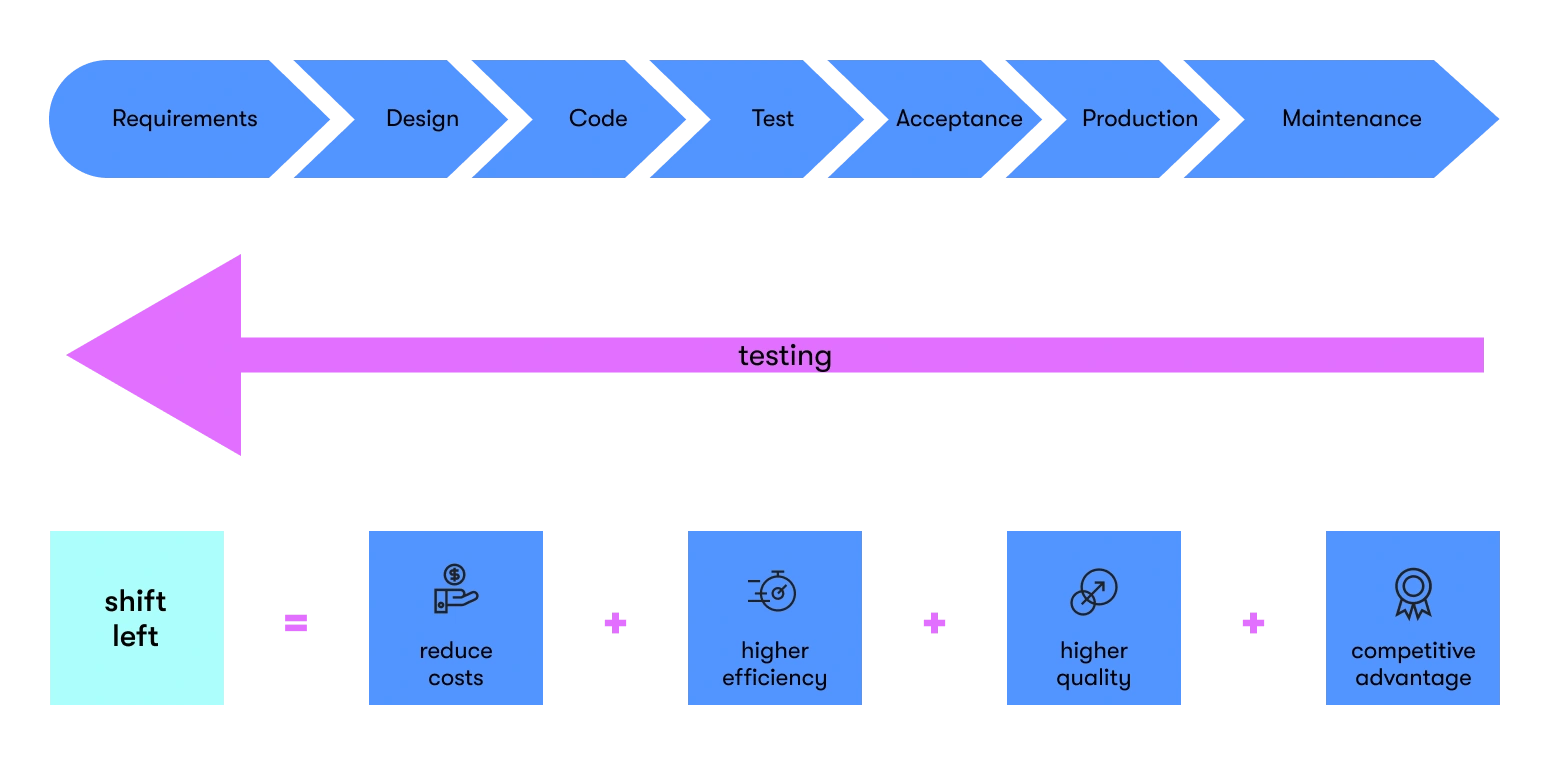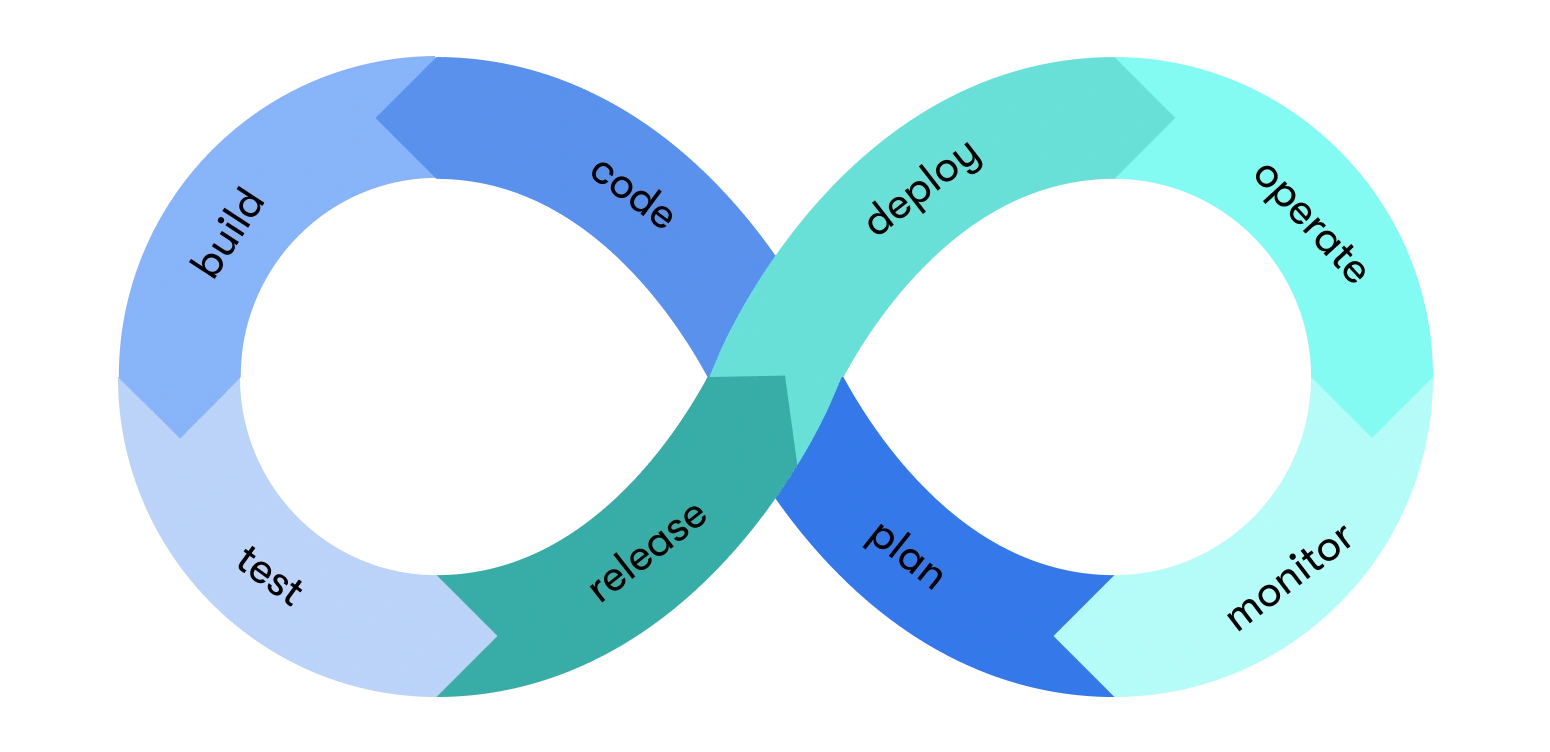Software testing no longer has to be as time-consuming and expensive as it used to be, or unfortunately still is for some teams.
Traditionally, testing always waited for the development cycle to end before it began. That can be a slow and costly approach because it means that any bug discovered is often found when it is too late in the development cycle to easily fix it. This is where shift-left principles, which focus on continuous testing, come in.
Highly recommended in DevOps, shift-left testing principles are increasingly adopted by teams that want to improve their QA process and develop better applications faster and with the highest level of efficiency across the board.
What are shift-left testing principles?
When conventional software development frameworks are utilized for application testing, it generally occurs near the conclusion of the development cycle. If apps fail to satisfy quality standards, perform effectively, or otherwise fulfill requirements, they are returned to the developers.
This isn't ideal, since issues detected late in the development cycle are more complicated, time-consuming, and costly to address than faults identified early in the process.
Shift-left is a software development method in which teams concentrate on detecting and addressing issues before they become bugs. Shifting left in DevOps relies on a continuous testing approach that is maintained throughout the software development lifecycle (SDLC).

Shift-left vs shift-right
First, we must explain what shifting left or right means in DevOps. Think of the development cycle as a kind of continuum, or Möbius strip, with a left and a right side.

On the left side, teams develop and test their apps in pre-production. Their focus is generally on building software that meets specified design criteria.
On the right side, we have the production side of things, where the software is available to users. In this stage, the main focus is maintaining software that meets reliability and business goals.
The practice of completing testing, quality, and performance assessment in production, under real-world conditions, is known as shift-right. The shift-right approach guarantees that production-ready programs can handle real-world user loads while maintaining high quality standards.
What does shift-left mean in DevOps?
In DevOps, shift-left refers to the team's attempts to ensure that applications are, from the earliest phases of SDLC, a part of the DevSecOps organizational design (the combination of development, security, and operations).
DevOps features continuous testing and continuous deployment.
Continuous testing is a technique that involves testing earlier, more frequently, testing everywhere, and automating. Continuous testing implies testing that is done without interruption. A software change travels from development to testing to deployment in an always-on DevOps process. This approach, which includes unit tests, integration tests, system testing, and API testing, assists developers in locating risks, addressing them, and improving product quality.
Continuous deployment means that every time something is changed, it is tested and then deployed before the product goes back to refinement, upgrading, or additional development, and then back to testing and deployment, again and again. This cycle improves the product with every deployment.
The benefits of DevOps shift-left testing
Shift-left development practices in SDLC have certain advantages, though, which have caused the demand for relevant skills to soar as organizations opt for DevOps services.
Below are the key reasons why DevOps recommends shift-left testing principles:
1. Reduce costs for development and testing
As previously stated, the cost and ramifications of bug-fixing increase the later an issue is detected. As a result, shift-left testing is conducted after each build is done, to catch and address errors early. Because flaws are discovered early, a shift-left testing technique can reduce the total expenses for development, testing, and resolution.
2. Create cleaner, higher-quality code
Sometimes, when flaws are discovered late, they may be left unresolved simply because of how hard they are to remedy. When caught early, bugs can be worked out to ensure that the final product has higher-quality code and higher-quality performance compared to expectations and needs.
3. Coordinate bug resolution
Shift-left fosters more coordination between developers and testers since testing begins with the first build. In an environment that demands speed while maintaining high quality, shift-left testing represents the best way to get testing and developers on the same page.
4. Save time
Since the testing starts with the very first phase of the cycle, it is unlikely to go over budget or be delayed. This means timely delivery is possible without sacrificing quality, which is one of the DevOps methodology goals.
5. Ensure customer satisfaction
With a shift-left approach, the code delivered at the end of the development cycle going into production is cleaner, higher quality, and more stable. Since it can go to production with few or no glaring errors, users get what they want immediately instead of waiting for new iterations.
How to apply DevOps shift-left best practices to your project
Switching to reap the benefits of a shift-left approach is not a straightforward path with a timeline you can readily determine. It is continuous, and intended to aid your development strategy over the long term. How do DevOps engineers and team leaders apply that to their projects to leverage DevOps benefits? Let’s find out.
Define the way forward
Engineering and security teams should settle on shift-left expectations and standards before any changes are made. It is critical that they define what shift-left looks like for their business, and that they develop a blueprint of incremental long-term advancements. They may also evaluate the risks to determine where to begin introducing shift-left practices.
Address possible testing automation challenges
You have to consider the challenges of automating, and how to deal with them, when moving to a shift-left approach.
Compliance certification is one of the challenges of shifting left in DevOps. Before code compiling can commence, the source code must undergo multiple steps of testing procedures for various laws, such as GDPR (General Data Protection Regulation).
Organizations can achieve the necessary regulatory compliance by automating compliance screening and incorporating it into the SDLC. The tests may take a long time, but the time saved over the long term is worth it.
Security testing must adhere to industry guidelines and standards established by groups like OWASP (Open Web Application Security Project). This type of compliance can build consumer trust, while fostering secure software creation automation.
Use automated technologies
Use automated technologies to detect flaws early. Automation expedites the compilation, testing, and release of code. It helps avoid human mistakes and accelerate code transition from development to delivery.
DevOps teams have discovered that security teams must collaborate extensively with other departments to ensure that critical features are built into apps. They can achieve this by using security automation, shift-left testing, and static analysis tools.
Educate your team members
Education can help people transition to a shift-left perspective. Shifting left in DevOps has its share of hazards, because testing has to keep up with the rapid pace of development. Teams who have not previously dealt with managing risk must now consider how new processes could affect product development. The teams need to understand what each is tasked with doing in the workflow.
Key takeaways
- The shift-left technique, frequently referred to as shift-left testing, is an essential software testing approach undertaken early in the SDLC.
- DevOps recommends shift-left testing principles as a way to reduce costs, improve the code quality, drive up end user satisfaction, and save development time.
- Testing becomes an early and regular activity as you shift to the left. It occurs before, during, and after development. In general, this means reduced waiting periods for testers.
- Security testing, in a shift-left environment, aids in identifying potential risks early in the lifecycle, when they are easier to address.
- Organizations can leverage automated testing solutions to optimize many components of SDLC, making the change to DevOps easier. Automation also simplifies the process of putting software and apps into production, while avoiding the errors that come with human-dependent testing.

The EPAM Anywhere Editorial Team is an international collective of senior software engineers, managers and communications professionals who create, review and share their insights on technology, career, remote work, and the daily life here at Anywhere.
The EPAM Anywhere Editorial Team is an international collective of senior software engineers, managers and communications professionals who create, review and share their insights on technology, career, remote work, and the daily life here at Anywhere.
Explore our Editorial Policy to learn more about our standards for content creation.
read more




















